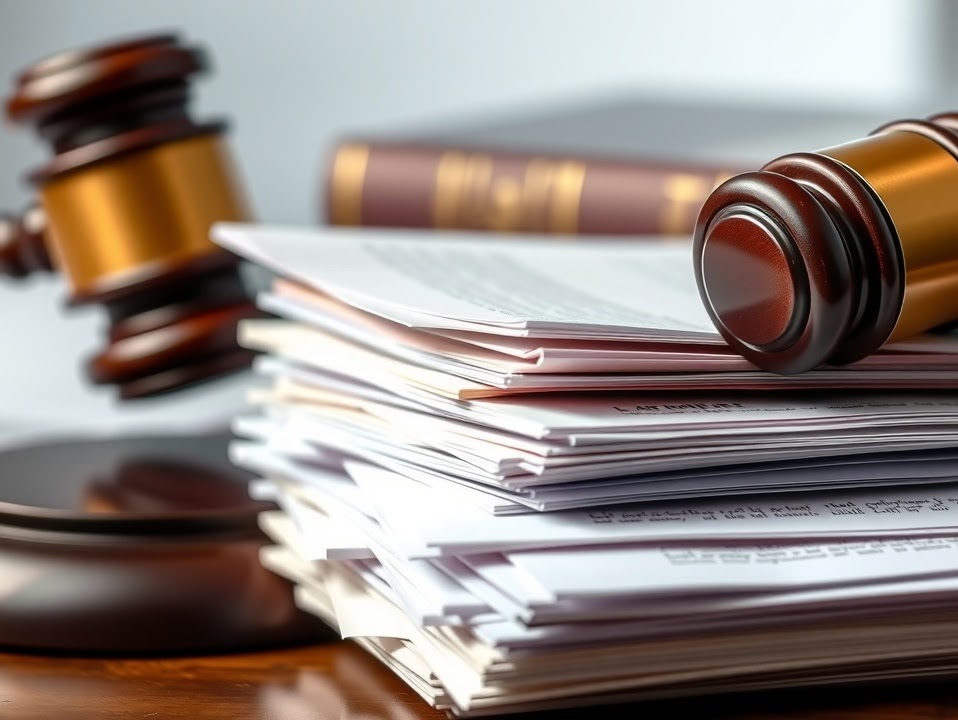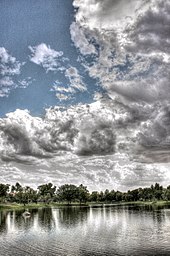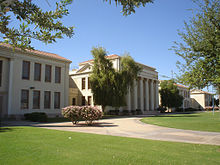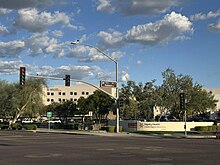

Legal malpractice occurs when a lawyer fails to perform their duties to the required standard of care, resulting in harm or damages to their client. This type of professional negligence can take many forms, such as missing deadlines, giving incorrect advice, failing to communicate with the client, or mishandling important documents.
When a client believes that their lawyer has committed malpractice, they may file a legal malpractice claim in order to seek compensation for any losses they have suffered as a result of the attorney's actions or omissions. In order to succeed in such a claim, the client must prove that the lawyer breached their duty of care, that this breach caused harm, and that there were actual damages incurred.
Legal malpractice claims can be complex and challenging to prove, as they often involve technical legal issues and require expert testimony from other attorneys. However, if successful, these claims can result in financial compensation for the client and may also lead to disciplinary action against the negligent lawyer.
It is important for clients who believe they have been the victims of legal malpractice to seek legal advice from another attorney as soon as possible in order to understand their rights and options for recourse. By holding negligent lawyers accountable for their actions, clients can help ensure that the legal profession maintains high standards of ethics and professionalism.
Legal malpractice claims are a serious matter that can have significant consequences for both clients and attorneys. In order to prove legal malpractice, certain elements must be present. These elements serve as the basis for establishing that an attorney breached their duty of care to their client, resulting in harm or damages.
The first element required to prove legal malpractice is the existence of an attorney-client relationship. This means that there must be a formal agreement between the attorney and the client, establishing a professional relationship where the attorney owes a duty of care to the client. Without this relationship, it would be difficult to establish that the attorney had a legal obligation to act in the best interests of the client.
The second element is a breach of the duty of care owed by the attorney to the client. This means that the attorney failed to act with the level of skill and competence that is expected from a reasonable attorney in similar circumstances. This breach could come in many forms, such as missing deadlines, failing to communicate important information, or providing incorrect legal advice.
The third element required to prove legal malpractice is causation. This means that there must be a direct link between the attorney's breach of duty and harm suffered by the client. The client must show that they would not have suffered harm if it were not for the attorney's negligence or misconduct.
Finally, the fourth element is damages. In order to succeed in a legal malpractice claim, the client must demonstrate that they suffered actual harm or losses as a result of the attorney's actions. This could include financial losses, emotional distress, loss of opportunity, or other tangible harms.
In conclusion, proving legal malpractice requires establishing these four key elements: an attorney-client relationship, breach of duty of care, causation, and damages. By meeting these requirements, clients can hold negligent attorneys accountable for their actions and seek compensation for any harm suffered as a result of legal malpractice.

If you believe that you have been a victim of medical malpractice, it can be a confusing and overwhelming experience.. It is important to take certain steps to protect your rights and seek justice for any harm that may have been caused by negligent medical care. The first step you should take if you suspect medical malpractice is to gather all relevant documentation related to your medical treatment.
Posted by on 2024-11-18

Seeking legal representation for medical malpractice claims is of utmost importance in ensuring that your rights are protected and that you receive the compensation you deserve.. Dealing with the aftermath of a medical error can be overwhelming, both emotionally and financially.
Posted by on 2024-11-18
Legal malpractice occurs when a lawyer fails to provide the level of skill and care expected of them, ultimately causing harm to their client. There are several common examples of legal malpractice that can lead to claims being filed against attorneys.
One common example is negligence in handling a case. This can include missing important deadlines, failing to conduct necessary research, or not adequately preparing for trial. If a lawyer's negligence results in a negative outcome for their client, they may be held liable for malpractice.
Another common example is conflicts of interest. Lawyers have a duty to act in the best interests of their clients, and this includes avoiding any conflicts that could compromise their ability to provide unbiased advice. If a lawyer fails to disclose a conflict of interest or represents conflicting parties, they may be sued for legal malpractice.
Miscommunication with clients is also a frequent source of legal malpractice claims. Lawyers have an obligation to keep their clients informed about the status of their case and any important developments. Failure to communicate effectively can lead to misunderstandings or missed opportunities, resulting in harm to the client.
Finally, breaches of confidentiality can also give rise to legal malpractice claims. Lawyers are required to protect the privacy of their clients and keep all information shared with them confidential. If a lawyer discloses confidential information without authorization, they may face legal consequences.
Overall, it is essential for lawyers to uphold high ethical standards and provide competent representation to their clients. Failing to do so can result in legal malpractice claims and damage both the lawyer's reputation and their clients' interests.

Potential damages play a crucial role in legal malpractice cases. When pursuing a legal malpractice claim, the plaintiff must demonstrate that they suffered harm as a result of their attorney's negligence. Damages in these cases can vary depending on the specific circumstances of the malpractice, but typically include financial losses, emotional distress, and reputational harm.
Financial damages are one of the most common types of damages sought in legal malpractice cases. This may include lost profits, legal fees paid to rectify the attorney's mistakes, and any other monetary losses incurred as a direct result of the malpractice. For example, if an attorney fails to file a lawsuit before the statute of limitations expires, causing the client to lose out on potential compensation, the client may seek damages for the financial harm suffered.
Emotional distress is another type of damage often claimed in legal malpractice cases. Being let down by an attorney can be incredibly stressful and emotionally taxing for clients. They may experience feelings of betrayal, frustration, and anxiety as a result of their attorney's negligence. In some cases, this emotional distress can be severe enough to warrant compensation.
Reputational harm is also a significant consideration in legal malpractice cases. If an attorney's negligence results in public embarrassment or damage to the client's reputation, this can have lasting consequences. Clients may seek damages for any harm done to their professional or personal reputation as a result of their attorney's actions.
In conclusion, potential damages in legal malpractice cases are varied and can have significant implications for both clients and attorneys involved. It is essential for clients to carefully consider all aspects of their potential damages when pursuing a legal malpractice claim to ensure they receive fair compensation for any harm suffered due to their attorney's negligence.
The statute of limitations for filing legal malpractice claims is an important concept to understand when seeking justice for professional negligence by an attorney. This time limit varies by state and can range from one to six years after the malpractice occurred or was discovered.
It is crucial to be aware of these time constraints as failing to file a claim within the specified period could result in your case being dismissed by the court. Therefore, it is essential to act promptly if you believe you have been a victim of legal malpractice.
If you suspect that your lawyer has made errors or acted unethically in handling your case, it is advisable to consult with another attorney who specializes in legal malpractice claims. They can help you determine whether you have a valid case and guide you through the process of filing a claim within the statute of limitations.
By understanding and adhering to the statute of limitations for legal malpractice claims, you can protect your rights and seek compensation for any harm caused by your former attorney's misconduct. Remember that time is of the essence when it comes to pursuing justice in cases of professional negligence.
As a lawyer, preventing legal malpractice is crucial in maintaining the trust and confidence of your clients. Legal malpractice claims can have serious consequences, both professionally and financially. To avoid falling into such pitfalls, there are several key practices that you should keep in mind.
First and foremost, it is essential to always stay up to date with the latest laws and regulations within your area of practice. This includes attending continuing education courses, reading legal publications, and staying informed about any changes in legislation that may impact your clients.
Additionally, it is important to maintain open communication with your clients throughout the duration of their case. Keeping them informed about the progress of their case, discussing potential outcomes, and managing their expectations can help prevent misunderstandings or disputes down the line.
Another key aspect of preventing legal malpractice is maintaining accurate and detailed records of all client interactions and case-related information. This includes documenting all communications, agreements, deadlines, and any other relevant details that may be important for the case.
Furthermore, it is crucial to always act in the best interests of your clients and adhere to ethical standards at all times. Avoid conflicts of interest, ensure confidentiality, and always prioritize the needs and well-being of your clients above all else.
By following these practices diligently and consistently, you can greatly reduce the risk of legal malpractice claims being brought against you. Remember that prevention is always better than cure when it comes to legal malpractice, so take proactive steps to protect yourself and your clients from potential issues in the future.
Chandler, Arizona | |
|---|---|
City | |
 Aerial view of Chandler | |
 Location in Maricopa County, Arizona | |
| Coordinates: 33°18′N 111°50′W / 33.300°N 111.833°W | |
| Country | United States |
| State | |
| County | Maricopa |
| Founded | May 17, 1912 |
| Government | |
| • Type | Council-Manager |
| • Mayor | Kevin Hartke[1] |
| Area | |
| • City | 65.55 sq mi (169.77 km2) |
| • Land | 65.48 sq mi (169.58 km2) |
| • Water | 0.07 sq mi (0.18 km2) |
| Elevation | 1,211 ft (370 m) |
| Population (2020)[2] | |
| • City | 275,987 |
| • Estimate (2022)[2] | 280,711 |
| • Rank | US: 78th |
| • Density | 4,226.4/sq mi (1,627.45/km2) |
| • Metro | 4,948,203 |
| • Demonym | Chandlerite |
| Time zone | UTC−7 (MST (no DST)) |
| ZIP Codes | 85224, 85225, 85226, 85286, 85248, 85249 |
| Area code | 480 |
| FIPS code | 04-12000 |
| GNIS feature ID | 2409433[3] |
| Website | www |
Chandler is a city in Maricopa County, Arizona, United States, and a suburb in the Phoenix-Mesa-Chandler Metropolitan Statistical Area. It is the fourth-most populous city in Arizona, after Mesa, Tempe, and Phoenix. Chandler is considered to be a part of the East Valley.
As of the 2020 census, the population of Chandler was 275,987,[2] up from 236,123 at the 2010 census.[4] Chandler is a commercial and tech hub for corporations like Intel, Northrop Grumman, Wells Fargo, PayPal and Boeing.
In 1891, Dr. Alexander John Chandler, a Canadian and the first veterinary surgeon in the Arizona Territory, settled on a ranch south of Mesa and studied irrigation engineering. By 1900, he had acquired 18,000 acres (73 km2) of land and began drawing up plans for a town-site on what was then known as the Chandler Ranch. The town-site office opened on May 16, 1912.
The original town-site was bounded by Galveston Street to the north, Frye Road to the south, Hartford Street to the west, and Hamilton Street to the east.[5] By 1913, a town center was established, featuring the Hotel San Marcos, which also had the first grass golf course in the state. Chandler High School was established in 1914. Chandler was officially incorporated on February 16, 1920, after 186 residents petitioned the Maricopa County Board of Supervisors to approve incorporation.[citation needed]
Most of Chandler's economy was sustained during the Great Depression (though the Depression was to blame for the cancellation of a second San Marcos hotel), but the cotton crash a few years later had a much deeper impact on the city's residents. A. J. Chandler lost his San Marcos hotel to creditors as a result.[6] Later, the founding of Williams Air Force Base in 1941 led to a small surge in population, but Chandler still only held 3,800 people by 1950.[citation needed]
By 1980, the population had grown to 30,000, and it has since paced the Phoenix metropolitan area's high rate of growth, with suburban residential areas and commercial use areas swallowing former agricultural plots. The population has nearly doubled in the last twenty years. Some of this growth was fueled by the establishment of manufacturing plants for communications and computing firms such as Microchip, Motorola and Intel.
According to the 2020 census, Chandler has a total area of 65.55 square miles (169.8 km2), of which 0.07 square miles (0.18 km2), or 0.11%, are listed as water.[2] The center of the city, along Arizona State Route 87, is 22 miles (35 km) southeast of Downtown Phoenix.
Chandler is in proximity to/borders the San-Tan mountain range. The San-Tan mountains are in the jurisdiction of the Gila River Indian Community.
Chandler is divided into three parts: North Chandler, West Chandler and South Chandler, each being divided by the Loop 202 (Santan Freeway) and Loop 101 (Price Freeway).
| Climate data for Chandler, AZ | |||||||||||||
|---|---|---|---|---|---|---|---|---|---|---|---|---|---|
| Month | Jan | Feb | Mar | Apr | May | Jun | Jul | Aug | Sep | Oct | Nov | Dec | Year |
| Record high °F (°C) | 89 (32) |
95 (35) |
99 (37) |
106 (41) |
118 (48) |
116 (47) |
119 (48) |
115 (46) |
113 (45) |
107 (42) |
97 (36) |
86 (30) |
119 (48) |
| Mean daily maximum °F (°C) | 67 (19) |
71 (22) |
77 (25) |
85 (29) |
94 (34) |
104 (40) |
106 (41) |
104 (40) |
99 (37) |
89 (32) |
75 (24) |
67 (19) |
87 (30) |
| Daily mean °F (°C) | 54 (12) |
58 (14) |
63 (17) |
70 (21) |
78 (26) |
87 (31) |
92 (33) |
90 (32) |
85 (29) |
74 (23) |
61 (16) |
54 (12) |
72 (22) |
| Mean daily minimum °F (°C) | 41 (5) |
45 (7) |
49 (9) |
54 (12) |
61 (16) |
70 (21) |
77 (25) |
76 (24) |
70 (21) |
59 (15) |
47 (8) |
40 (4) |
57 (14) |
| Record low °F (°C) | 15 (−9) |
19 (−7) |
24 (−4) |
30 (−1) |
37 (3) |
43 (6) |
54 (12) |
51 (11) |
40 (4) |
30 (−1) |
22 (−6) |
17 (−8) |
15 (−9) |
| Average precipitation inches (mm) | 1.01 (26) |
1.03 (26) |
1.19 (30) |
0.33 (8.4) |
0.17 (4.3) |
0.06 (1.5) |
0.89 (23) |
1.14 (29) |
0.89 (23) |
0.81 (21) |
0.77 (20) |
0.98 (25) |
9.20 (234) |
| Source: The Weather Channel[7] | |||||||||||||
| Census | Pop. | Note | %± |
|---|---|---|---|
| 1930 | 1,378 | — | |
| 1940 | 1,239 | −10.1% | |
| 1950 | 3,799 | 206.6% | |
| 1960 | 9,531 | 150.9% | |
| 1970 | 13,763 | 44.4% | |
| 1980 | 29,673 | 115.6% | |
| 1990 | 89,862 | 202.8% | |
| 2000 | 176,581 | 96.5% | |
| 2010 | 236,123 | 33.7% | |
| 2020 | 275,987 | 16.9% | |
| 2022 (est.) | 280,711 | [8] | 1.7% |
| U.S. Decennial Census[9] | |||
| Race / Ethnicity (NH = Non-Hispanic) | Pop 2000[10] | Pop 2010[11] | Pop 2020[12] | % 2000 | % 2010 | % 2020 |
|---|---|---|---|---|---|---|
| White alone (NH) | 121,168 | 145,724 | 147,119 | 68.62% | 61.72% | 53.31% |
| Black or African American alone (NH) | 5,821 | 10,580 | 15,564 | 3.30% | 4.48% | 5.64% |
| Native American or Alaska Native alone (NH) | 1,628 | 2,715 | 3,850 | 0.92% | 1.15% | 1.39% |
| Asian alone (NH) | 7,345 | 19,119 | 32,710 | 4.16% | 8.10% | 11.85% |
| Pacific Islander alone (NH) | 222 | 365 | 571 | 0.13% | 0.15% | 0.21% |
| Some Other Race alone (NH) | 301 | 369 | 1,237 | 0.17% | 0.16% | 0.45% |
| Mixed Race or Multi-Racial (NH) | 3,037 | 5,443 | 12,679 | 1.72% | 2.31% | 4.59% |
| Hispanic or Latino (any race) | 37,059 | 51,808 | 62,257 | 20.99% | 21.94% | 22.56% |
| Total | 176,581 | 236,123 | 275,987 | 100.00% | 100.00% | 100.00% |
As of the 2022[update] American Community Survey estimates, there were 280,684 people and 106,712 households.[13][14] The population density was 4,276.2 inhabitants per square mile (1,651.1/km2). There were 113,092 housing units at an average density of 1,722.9 per square mile (665.2/km2).[15][16][14] The racial makeup of the city was 56.0% White, 13.4% Asian, 7.6% Black or African American, 4.4% some other race, 1.0% Native American or Alaskan Native, and 0.1% Native Hawaiian or Other Pacific Islander, with 17.5% from two or more races.[14] Hispanics or Latinos of any race were 21.2% of the population.[14]
Of the 106,712 households, 34.4% had children under the age of 18 living with them, 24.2% had seniors 65 years or older living with them, 50.7% were married couples living together, 7.4% were couples cohabitating, 18.3% had a male householder with no partner present, and 23.6% had a female householder with no partner present.[13] The median household size was 2.61 and the median family size was 3.12.[13]
The age distribution was 23.8% under 18, 8.9% from 18 to 24, 27.9% from 25 to 44, 26.4% from 45 to 64, and 13.0% who were 65 or older. The median age was 37.0 years.[17] For every 100 females, there were 105.8 males.[14]
The median income for a household was $98,664, with family households having a median income of $116,362 and non-family households $66,304. The per capita income was $50,247.[18][19] Out of the 279,322 people with a determined poverty status, 7.6% were below the poverty line. Further, 9.3% of minors and 7.6% of seniors were below the poverty line.[20]
In the survey, residents self-identified with various ethnic ancestries. People of German descent made up 13.0% of the population of the city, followed by Irish at 10.1%, English at 8.5%, American at 5.7%, Italian at 4.5%, Polish at 1.9%, Scottish at 1.7%, French at 1.6%, Arab at 1.5%, Sub-Saharan African at 1.5%, Norwegian at 1.2%, Dutch at 1.1%, Swedish at 1.0%, French Canadian at 0.6%, Russian at 0.6%, Scotch-Irish at 0.5%, and Greek at 0.5%.[13]
Computer chip manufacturer Intel has two locations in Chandler. Other high-technology manufacturing firms have partnerships with Chandler,[21] their operations employing approximately 25% of non-government workers in 2007.[22]
Since 2003, more than 2,900 jobs and investments totalling $3 billion have been created along the Price and Santan freeways,[23] in the Price Road Corridor.[24] The 1,300,000-square-foot (120,000 m2) Chandler Fashion Center, opened in 2001.
Companies headquartered in Chandler include Keap, Microchip, and Rogers. Bashas' headquarters is in a county island surrounded by Chandler.
According to the City of Chandler Economic Development Division,[25] leading employers in the city are:
| # | Employer | # of Employees |
|---|---|---|
| 1 | Intel | 12,000 |
| 2 | Wells Fargo | 5,500 |
| 3 | Chandler Unified School District | 4,900 |
| 4 | Bank of America | 3,600 |
| 5 | Chandler Regional Medical Center / Dignity Health | 2,500 |
| 6 | Northrop Grumman | 2,150 |
| 7 | Chandler–Gilbert Community College | 1,900 |
| 8 | City of Chandler | 1,800 |
| 9 | Microchip Technology (HQ) | 1,700 |
| 10 | NXP Semiconductors | 1,700 |
| 11 | PayPal | 1,500 |
| 12 | Insight Enterprises | 1,400 |
| 13 | Microchip Technology | 1,500 |
| 14 | Verizon | 1,400 |
| 15 | Bashas' (HQ and Distribution Center) | 1,100 |

Chandler holds an annual Ostrich Festival at Tumbleweed Park[26] to commemorate when ostrich farms in the area produced plumes for women's hats during the 1910s.[citation needed]
Chandler also holds an annual ceremony to light a tree made from tumbleweeds; a ceremony founded in 1957 when Chandler sought an alternative way to decorate the city during the Christmas holidays.[27]
Venues, galleries and museums include:
Several sites in Chandler are listed on the National Register of Historic Places, including the McCullough–Price House and the San Marcos Hotel.[30]
The Chandler Public Library serves Chandler and the greater East Valley. The main library is in Downtown Chandler, with two branches elsewhere in the city: Sunset, Basha (shared with Basha High School), and Hamilton (shared with Hamilton High School).

Tumbleweed Park hosts the annual Ostrich Festival, the Fourth of July Fireworks Festival and the annual Day of Play. It features a recreational center with equipment suited for fitness.[31]
Hamilton Aquatic Center is a shared-use aquatic facility, located within Hamilton High School's campus.[32]
Nozomi Aquatic Center is a shared-use aquatic facility which includes a 25 yard, 8-lane competition pool.[33]
Veterans Oasis Park is located at the city's highest point, at 1,311 feet (400 m).[34] It includes a wildlife preservation and designated horse and walking trails.[35]
Chandler is represented by a mayor, a vice mayor and five city council members. The vice mayor is elected by the city council from among its members. The mayor, vice mayor and council members represent the entire city and are not elected from districts or wards.[36]
Kevin Hartke was elected to his second term as mayor in 2023.[36]

The north central section of the city and the western "leg" of the city are within Arizona's 4th congressional district, served by Representative Greg Stanton, a Democrat. The rest of Chandler is within Arizona's 5th congressional district, served by Representative Andy Biggs, a Republican.
Chandler's western "leg" and a small, narrow portion of the adjacent northern part of the city are within Arizona's 18th Legislative District, served by Representatives Denise Epstein and Jennifer Jermaine, and Senator Sean Bowie, all Democrats. The rest of the city is in Arizona's 17th Legislative District, served by Representatives Jennifer Pawlik and Jeff Weninger, and Senator J. D. Mesnard, one Democrat and two Republicans.

Chandler is served by the Chandler Unified School District, Kyrene Elementary School District, Tempe Union High School District, Mesa Public Schools, and Gilbert Public Schools.[citation needed]
Catholic and charter schools include Basis Schools, Seton Catholic Preparatory, and Legacy Traditional Schools.[37]
Post-secondary educational institutions located in Chandler include: The University of Arizona Chandler,[38] International Baptist College, and the two-year Chandler-Gilbert Community College, which serves 13,000 students.[37]
Chandler Municipal Airport is a two-runway general aviation facility. Stellar Airpark is a privately owned municipal airport open to the public.

Chandler is served by three limited access highways:
Chandler is served by two single-track branch lines of the Union Pacific Railroad.
Hospitals in Chandler include Chandler Regional Medical Center, and Banner Ocotillo Medical Center.[40][41]
Chandler has two sister cities:[42]